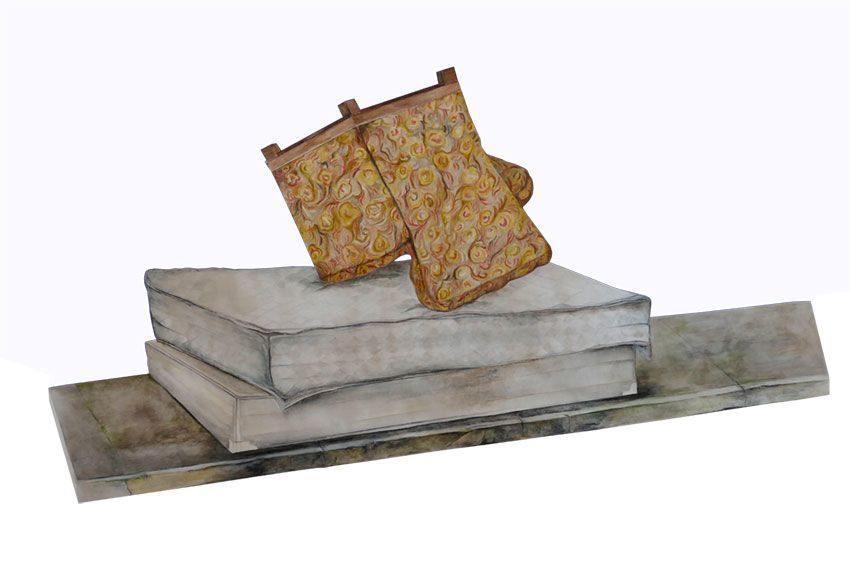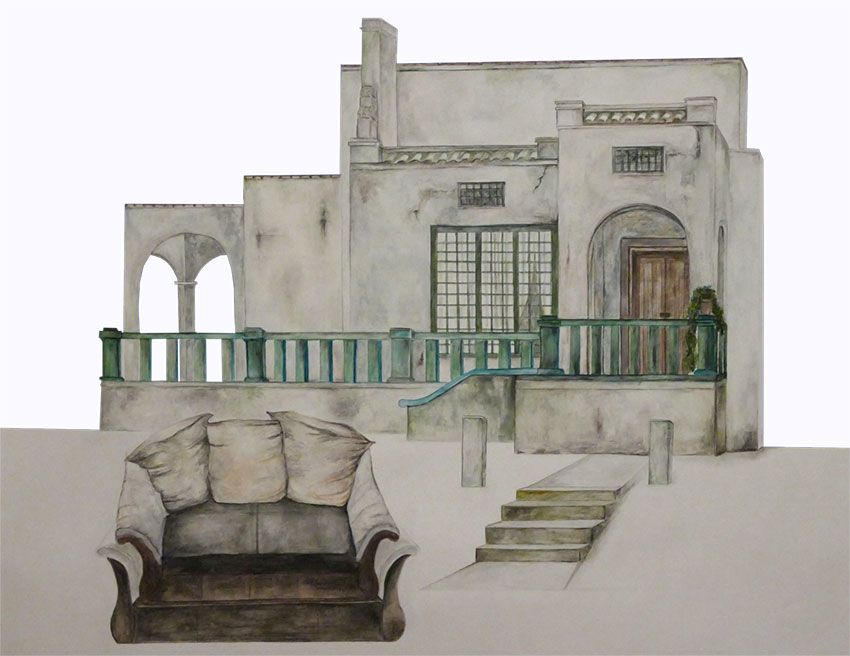Karina Alvarez: Flatus Vocis
JANUARY 30 – MARCH 5, 2021
Karina Alvarez´s work is a multidisciplinary exploration combining video, sound production and drawing. She applies cutting edge technologies by using software micro-controllers and integrated sensors to create generative environments to produce an inquiry into the spaces used in her work.
Her research is used to create pieces based in concepts that analyze space from the different artistic languages, understanding the influence of a certain context (geographic, ideological and emotional) and providing these clues to the person experiencing it. Her current line of research explores and focuses on the use of programming languages and software platforms used to synthesize audio and image and to analyze and process algorithmic compositions.
Her work explores the idea of multiple screens and layers to create immersive atmospheres, looking for fractured image narratives and using generative sound to give the experience of discontinuity to the visitors.
Low definition is a concept that Alvarez has adopted to merge the use of low resolution technologies as well as techniques that derive from traditional analog procedures combined with innovative digital technologies.





FLATUS VOCIS: The Ephemeral in the Permanence
“This project is aimed at expanding two-dimensional graphic statements into dialogues with three-dimensional. Through the use of a digital device (smartphone), viewers can activate the time factor and sensitive, perceptive qualities of drawing with augmented reality.
“The project consists of producing a series of drawings where the digital device serves as a facilitator for a dynamic close-up between the two-dimensional artwork and the sensory-space created through a screen.
“This project will present a series of drawings (permanence) where the viewer, if they wish, can activate the time factor using their smartphone digital device (ephemeral). Using augmented reality, this action, will temporarily convert two-dimensional representations into sculptural interpretations of paintings and still lifes that represent scenographies.
“The title Flatus vocis (“words empty of meaning”) connects both realities — the ephemeral and the permanence; the two-dimensional images will seek to represent the “disorder,” the “abandonment,” the “nothingness,” which — in Henri Bergson’s words — designate, rather, an order that does not interest us; it is our disappointment that is expressed when we call that presence, absence. Thus, our life passes filling “voids” that our intelligence conceives under the influence of desire and memory. The smartphone as an object, in this context, represents part of the problem for me.
“I am not interested in whether the viewer understands this relationship of the object with the live scenographies, but there will be those who reflect on how loss, absence, and disorder are linked to this ephemeral object.
“As a theoretical framework, I start with the concept of digital ontofania, proposed by the French philosopher Stéphane Vial, to study the phenomenon of “perceptual digital technology” that we are experiencing in this “Digital Era.”
“A technical revolution corresponds epistemologically to a systematic revolution and a change in relation to the renewal of the structures of perception. The contemporary world is the result of a digital-type phenomenotechnique (a Gaston Bachelard concept) where techniques shape our perception and our ability to be in the world.
“The daily addiction that we have suffered in recent years in relation to digital interfaces presents us with new paradigms and concepts to be able to describe and understand the philosophical complexity of the digital phenomenon and therefore, become more deeply aware of the real meaning that we experience with the digital interfaces. By using, precisely, this digital interface —smartphone — to give life to the spatio-temporal staging of the drawings, I am revealing in a literal way, the cause of these losses, absences, and empty words in modern times.” — Karina Alvarez

